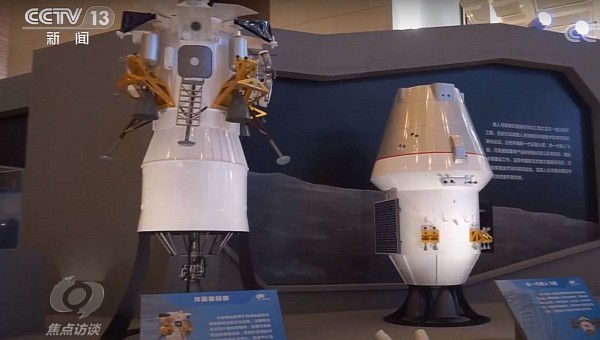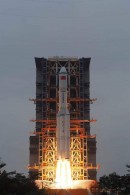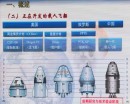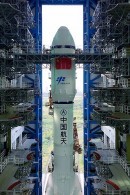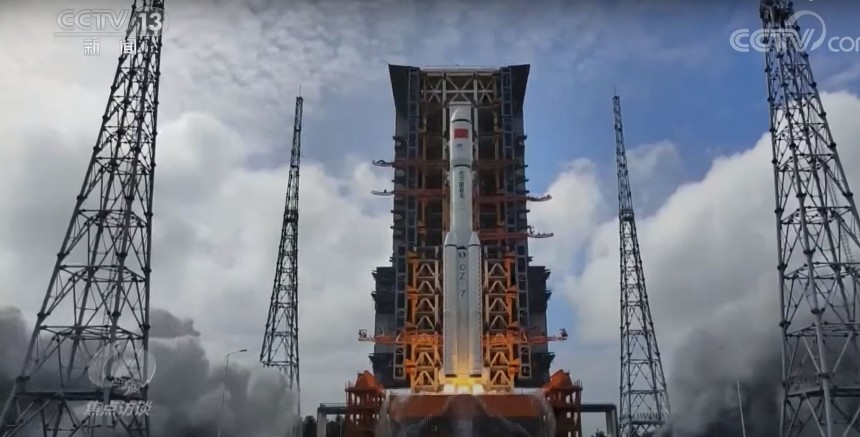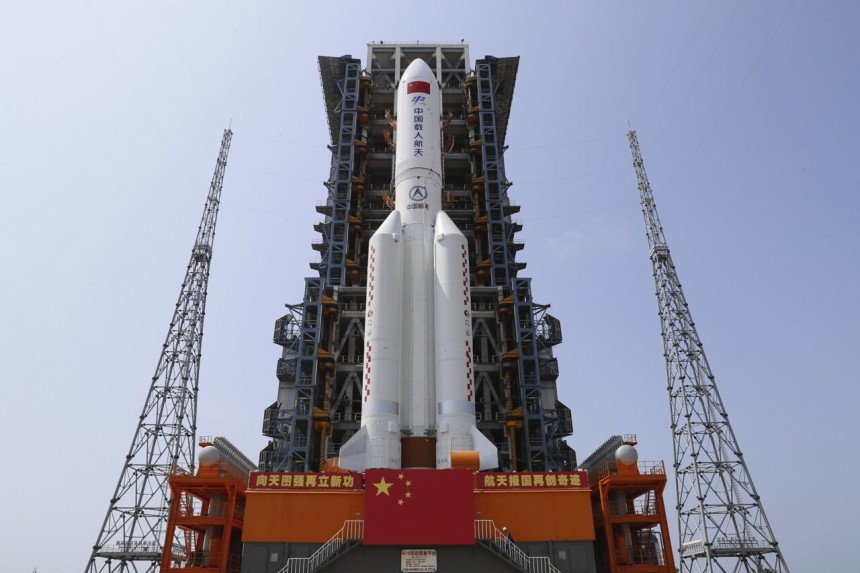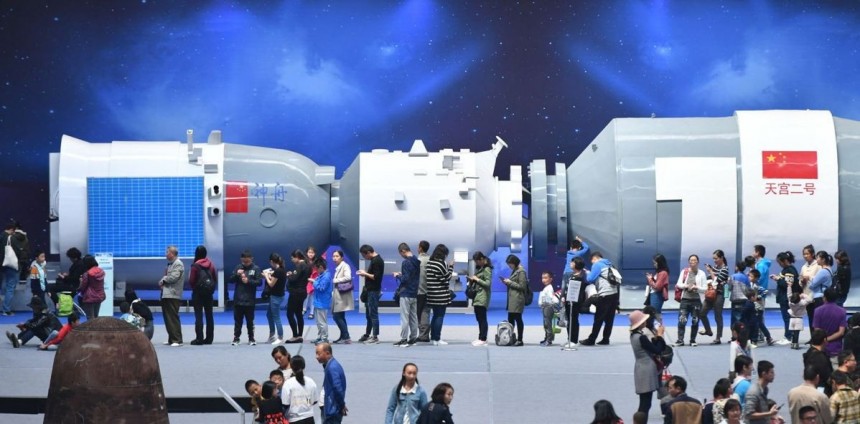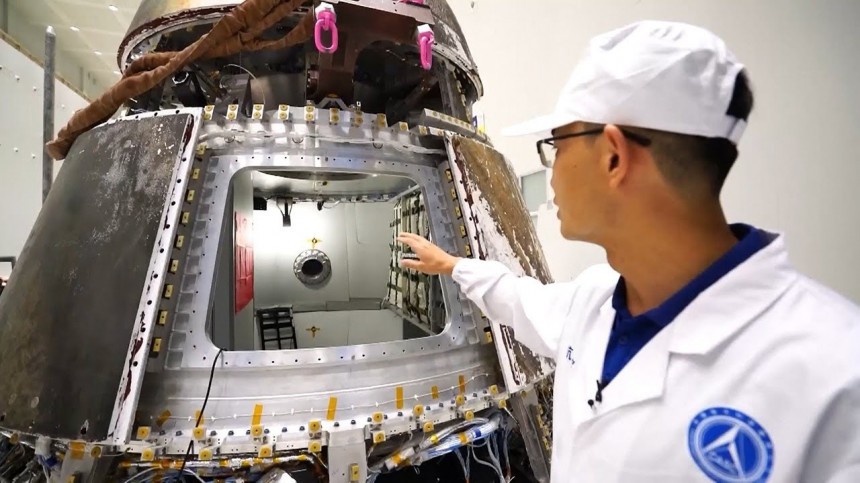If someone told a citizen of any western nation that China would have a space program to rival NASA's 25 years ago, they'd either scoff or laugh you out of the room. What a difference a quarter of a century can make, right?
In 2023, NASA and the CNSA (China National Space Administration) are locked in a space race we were once told wasn't a repeat of the competition against the Soviets. Funny how rhetoric can change in the blink of an eye, isn't it?
When the Administrator of NASA sounds the alarm on China's ambitions in space as Bill Nelson did recently, it's a sign we, as common folks, should start paying attention. If we don't, the CNSA will assuredly get to the Moon first.
If that sounds like the plot of Apple TV's For All Mankind, it's because how things might play out may rival Hollywood storytelling. To understand why that's the case, we need to know why China is touting advancements in domestic rocket and spacecraft technology a bit more than usual.
Allow us to paint the scene. It's the National Museum of China in the capital Beijing, at a technology expo celebrating 30 years of CNSA operation this month. The star attraction at the event is a scaled mockup of a human-crewed Chinese lunar landing vehicle. One far more conventional than the Starship bonkers machine touted as the LEM of the future for Artemis.
Provisions for a staged landing system complete with storage for linear rover and scientific equipment are prominent on the model vehicle's exterior.
The lunar lander's prominent second decent stage is perhaps its most perplexing feature. Unlike Grumman Aerospace's iconic Lunar Excursion Module, this concept uses its expendable second stage to save the landing vehicle itself from fueling its own descent down to the lunar surface. Anyone who knows the story of Apollo 11's perilous descent knows the LEM's fuel running out before reaching the ground means certain doom for all on board.
Thankfully, this nightmare scenario never happened. But it's clear the CNSA did their homework studying the Apollo landings before coming up with this design. Compared to the approach NASA and SpaceX intend to undertake using Starship as lunar module, China's methods feel far more subdued, perhaps even more traditional.
But no lunar module is complete without an all-mighty powerful super heavy-lift booster vehicle to strap it to. Apollo had the Saturn V, the Soviets had the N1, and the modern Artemis Program has the Space Launch System (SLS).
As for China, their current plans involve a rocket concept called the Long March 9. Designed from the ground up three separate times, a rocket with a degree of reusability a la SpaceX appears to be the path forward for the launch vehicle.
With a mammoth 24 engines in its first stage, this rocket would've made Sergei Korolev proud. If all goes according to plans, Long March 9 will be a far more successful launch vehicle than Korolev's N1, 30 first-stage engines and all.
Meanwhile, the China Aerospace Science and Technology Corporation (CASC) will manufacture a companion orbiter to go along with the new lander. Dubbed the Next-generation crewed spacecraft, its first boilerplate test is already under its belt as of 2020.
Couple that with a Tiangoing Space Station where Taikonauts can rendezvous before their trip to the Moon, and it looks like the CNSA truly has all their affairs in order. At least, on the surface, it looks like they do. It's anyone's guess how close China really is to reaching parity with NASA's Artemis Program.
For some context, NASA's Artemis I mission launched in November of last year. With the Lockheed Martin Orion spacecraft in tow, the mission proved NASA is still ahead of the pack in terms of progress back towards humans on the Moon.
For the moment, the Artemis II mission set to carry three Americans and one Canadian to circumnavigate the Moon is scheduled for May 2024. But anyone familiar with Artemis I's four agonizing back-to-back launch scrubs knows setting off on time is never a guarantee when it comes to NASA.
The test-as-you-fly method might be soul-crushing at times, but it surely saves lives. Nor is it a slam dunk that NASA won't encounter some form of mechanical snafu that's just as if not more serious than the fuel tank and main engine gremlins that foiled Artemis I multiple times.
The truth of the matter is Space Race 2.0 is still a two-party drag race between the United States and China where either side just stomped on the throttle. At the end of that proverbial quarter mile is the promise of human beings on the Moon to stay.
Not just to take some propaganda pictures and posture about why either communism or capitalism rules and the other side drools. That kind of schtick gets old after 50 years.
We're well overdue for some new material on that front. But if you leave this article thinking, "but what about the Russians?," oh, gosh, don't make us laugh. Good luck with that joint Russian/Chinese lunar base. We have a feeling one particular side will be wearing the pants in that operation.
When the Administrator of NASA sounds the alarm on China's ambitions in space as Bill Nelson did recently, it's a sign we, as common folks, should start paying attention. If we don't, the CNSA will assuredly get to the Moon first.
If that sounds like the plot of Apple TV's For All Mankind, it's because how things might play out may rival Hollywood storytelling. To understand why that's the case, we need to know why China is touting advancements in domestic rocket and spacecraft technology a bit more than usual.
Allow us to paint the scene. It's the National Museum of China in the capital Beijing, at a technology expo celebrating 30 years of CNSA operation this month. The star attraction at the event is a scaled mockup of a human-crewed Chinese lunar landing vehicle. One far more conventional than the Starship bonkers machine touted as the LEM of the future for Artemis.
The lunar lander's prominent second decent stage is perhaps its most perplexing feature. Unlike Grumman Aerospace's iconic Lunar Excursion Module, this concept uses its expendable second stage to save the landing vehicle itself from fueling its own descent down to the lunar surface. Anyone who knows the story of Apollo 11's perilous descent knows the LEM's fuel running out before reaching the ground means certain doom for all on board.
Thankfully, this nightmare scenario never happened. But it's clear the CNSA did their homework studying the Apollo landings before coming up with this design. Compared to the approach NASA and SpaceX intend to undertake using Starship as lunar module, China's methods feel far more subdued, perhaps even more traditional.
But no lunar module is complete without an all-mighty powerful super heavy-lift booster vehicle to strap it to. Apollo had the Saturn V, the Soviets had the N1, and the modern Artemis Program has the Space Launch System (SLS).
With a mammoth 24 engines in its first stage, this rocket would've made Sergei Korolev proud. If all goes according to plans, Long March 9 will be a far more successful launch vehicle than Korolev's N1, 30 first-stage engines and all.
Meanwhile, the China Aerospace Science and Technology Corporation (CASC) will manufacture a companion orbiter to go along with the new lander. Dubbed the Next-generation crewed spacecraft, its first boilerplate test is already under its belt as of 2020.
Couple that with a Tiangoing Space Station where Taikonauts can rendezvous before their trip to the Moon, and it looks like the CNSA truly has all their affairs in order. At least, on the surface, it looks like they do. It's anyone's guess how close China really is to reaching parity with NASA's Artemis Program.
For the moment, the Artemis II mission set to carry three Americans and one Canadian to circumnavigate the Moon is scheduled for May 2024. But anyone familiar with Artemis I's four agonizing back-to-back launch scrubs knows setting off on time is never a guarantee when it comes to NASA.
The test-as-you-fly method might be soul-crushing at times, but it surely saves lives. Nor is it a slam dunk that NASA won't encounter some form of mechanical snafu that's just as if not more serious than the fuel tank and main engine gremlins that foiled Artemis I multiple times.
The truth of the matter is Space Race 2.0 is still a two-party drag race between the United States and China where either side just stomped on the throttle. At the end of that proverbial quarter mile is the promise of human beings on the Moon to stay.
We're well overdue for some new material on that front. But if you leave this article thinking, "but what about the Russians?," oh, gosh, don't make us laugh. Good luck with that joint Russian/Chinese lunar base. We have a feeling one particular side will be wearing the pants in that operation.
